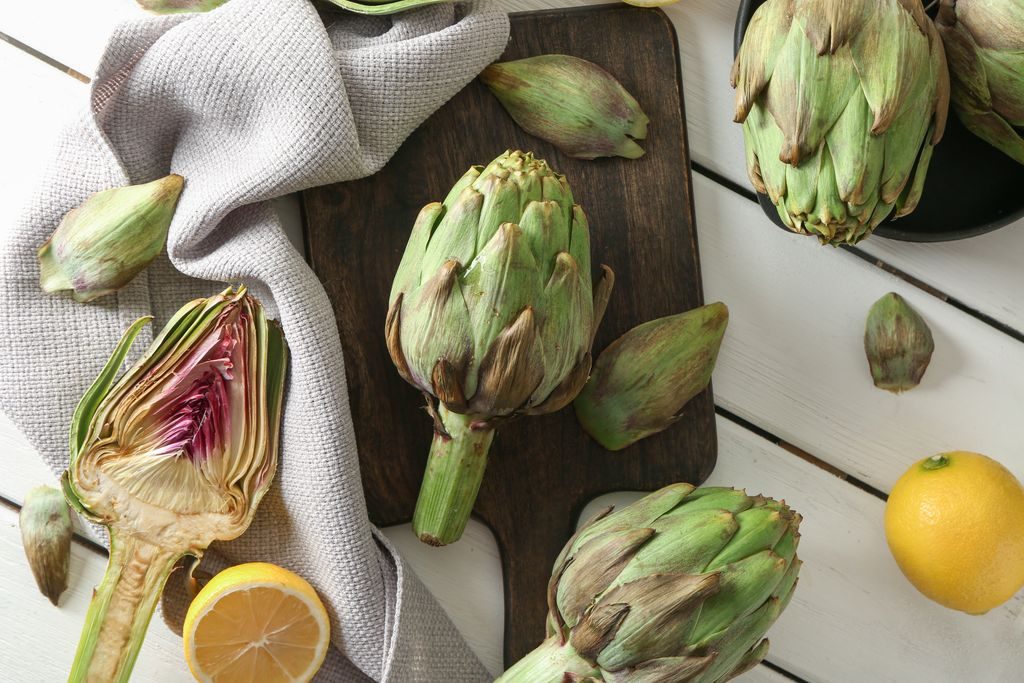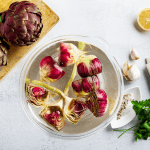Artichoke
Artichokes have an aspect that makes them immediately recognizable, as well as their flavor: they are typical of many healthy recipes.

Artichokes are a characteristic and unique looking vegetable, depending on the variety they can be available from June to September. Famous for their purifying action and for the benefits they bring to digestion, they can be eaten both raw and cooked, and very often they are used as an additional ingredient for omelettes and lasagna.
Their appearance is peculiar: during flowering they are dominated by a bright purple flower and the heart is protected by numerous pointed leaves, which in some varieties end in the so-called “thorns”. Depending on the type, the leaves of the artichoke can take on purple or green shades, while the nucleus can be as red-purple as light.
Artichokes in the kitchen
Here some delicious dishes made with artichokes, they are all from Italian cuisine:
- Roman style artichokes, stewed in olive oil and vegetable broth and flavored with garlic, parsley and mint;
- pan-fried artichokes, cooked in olive oil in a pan;
- artichokes alla giudia, fried whole in plenty of olive oil.
The artichokes area also the main or additional ingredient of different recipes, such as lasagna with artichokes, omelettes, savory pies and mixed fried vegetables.
Finally, a peculiar use of artichokes is in the field of liqueurs and purifying drinks: in addition to being present in numerous herbal teas, in fact, they are also the protagonists of alcoholic beverages such as digestive bitters based on cinarin.
Nutritional values of artichokes
Artichokes are rich in flavonoids and cinarin, a derivative of caffeic acid responsible for the healing effect for liver problems. In addition to having very few calories, about 47 per 100 grams, artichokes have strong natural purifying and diuretic properties, helping to “lighten” the work of the liver, gallbladder and kidneys.





